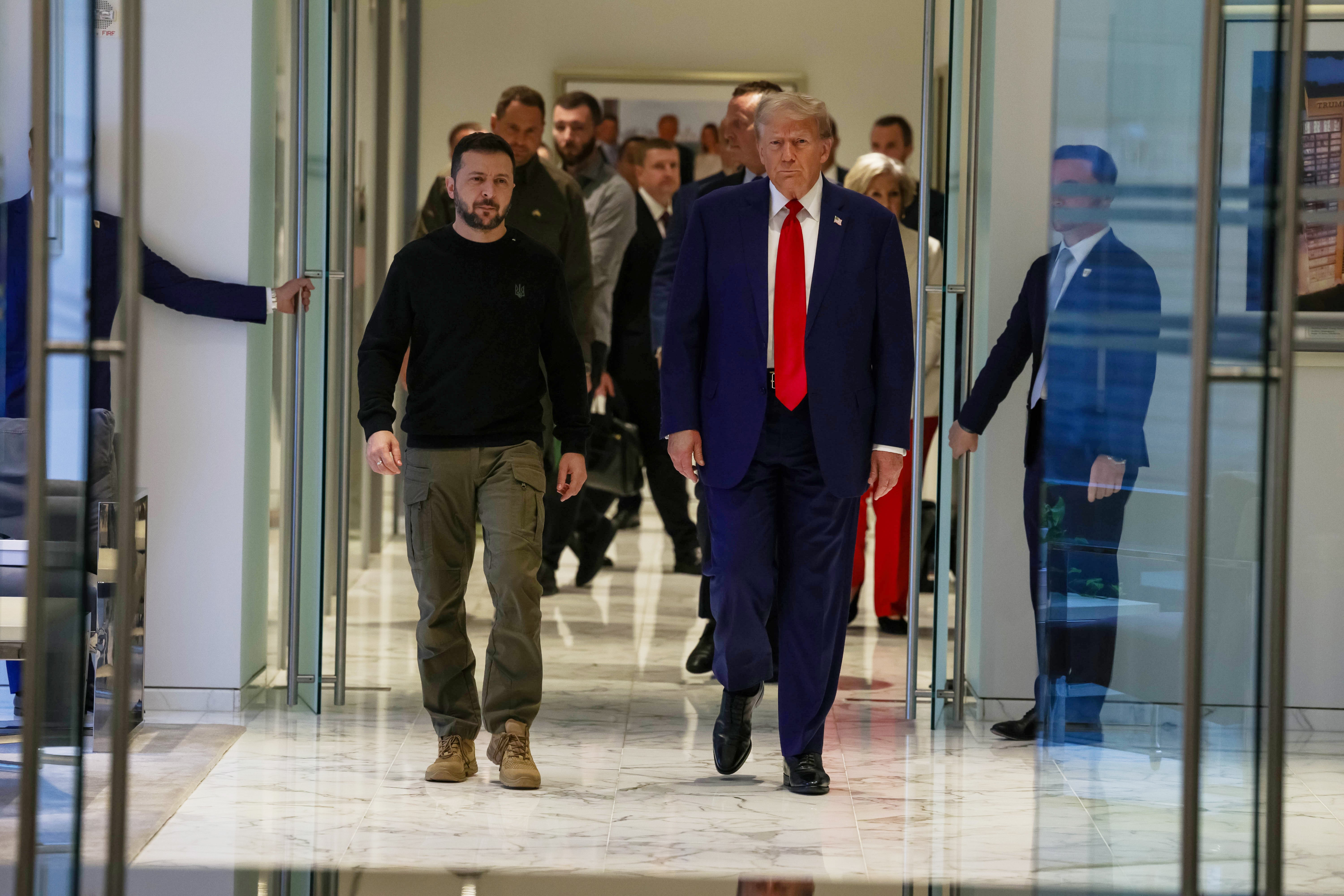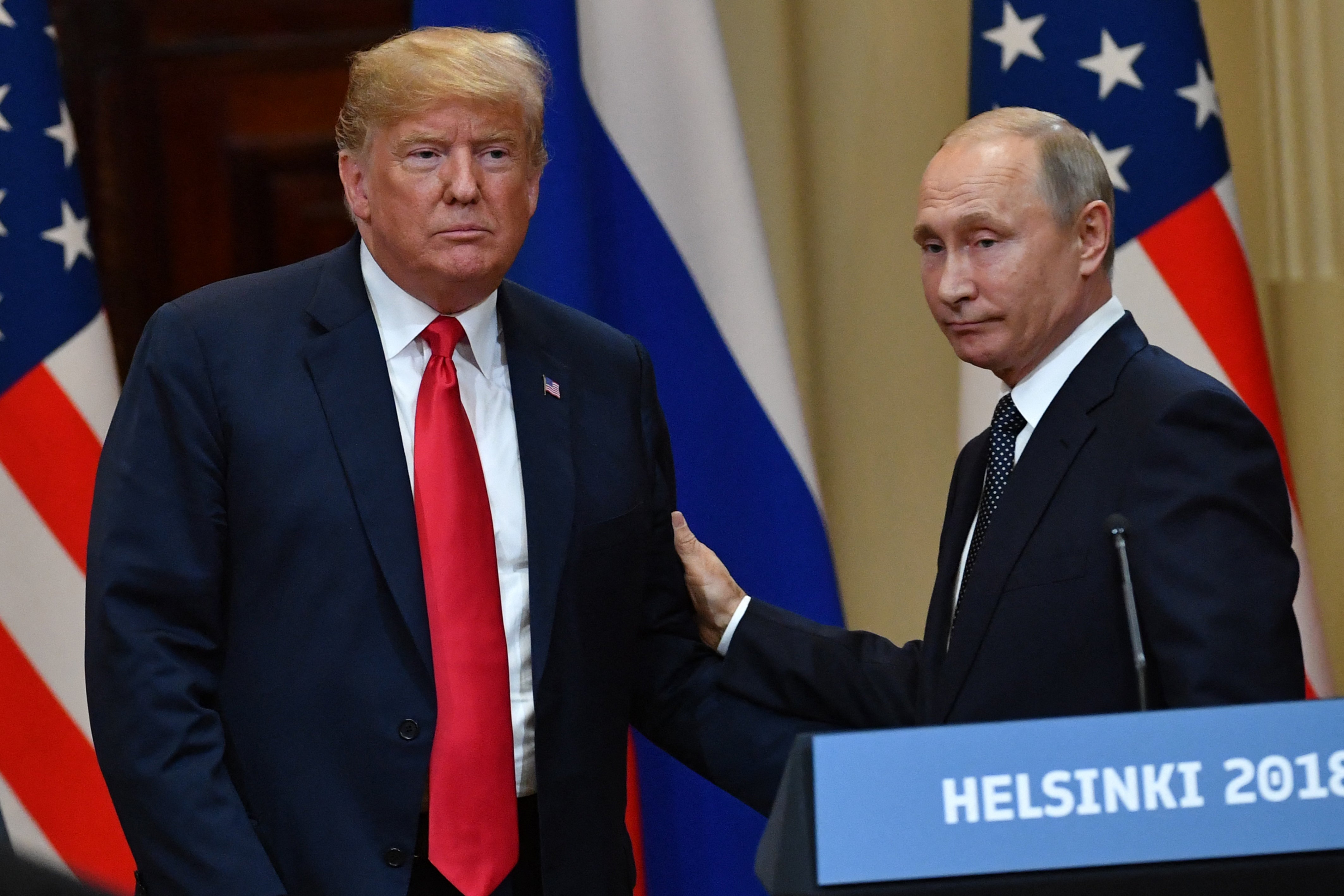Ukraine is facing a ‘hammer blow’ of 50,000 Russian troops in Kursk – can they hold out?
Experts tell Andy Gregory and Tom Watling that the real question is how much Kyiv’s troops are able to inflict casualties on the Russians as the price for taking the territory back


Your support helps us to tell the story
From reproductive rights to climate change to Big Tech, The Independent is on the ground when the story is developing. Whether it's investigating the financials of Elon Musk's pro-Trump PAC or producing our latest documentary, 'The A Word', which shines a light on the American women fighting for reproductive rights, we know how important it is to parse out the facts from the messaging.
At such a critical moment in US history, we need reporters on the ground. Your donation allows us to keep sending journalists to speak to both sides of the story.
The Independent is trusted by Americans across the entire political spectrum. And unlike many other quality news outlets, we choose not to lock Americans out of our reporting and analysis with paywalls. We believe quality journalism should be available to everyone, paid for by those who can afford it.
Your support makes all the difference.After months spent occupying a swathe of territory in Russia in the wake of a daring summer assault, Volodymyr Zelensky has claimed that Ukraine is now engaged against a force of 50,000 troops amassed by Vladimir Putin in the border Kursk region.
The Ukrainian incursion was the largest on Russian soil since the Second World War and succeeded in taking Moscow – and even Kyiv’s closest allies – by surprise.
But despite Ukrainian troops’ success in bedding into positions deep into Kursk, the offensive received a mixed reaction from analysts, with some questioning the wisdom of drawing vital defensive power away from the fight in Ukraine’s eastern Donbas region, where Mr Putin’s forces have been making steady, grinding gains for months.
With top Ukrainian officials revealing to The Independent in August that they viewed the Kursk offensive as a vital “psychological” tool to force Vladimir Putin to the negotiating table, Kyiv’s forces have succeeded in holding out in Kursk far longer than some analysts initially expected.
However, Moscow is now pushing to retake the territory. Following reports that thousands of North Korean troops have been stationed in Kursk, Ukraine’s military has claimed that Russia has suffered two consecutive days of record losses – suggesting the fight is gaining a new intensity.
Andrew Perpetua, who tracks Russian losses on the front line, told The Independent that he has already seen missing-in-action reports for the Kursk attack this week being published by families. Usually, he said, this would take two to three weeks.
While the reasons for this sudden speed are not certain, he suggested, “it could be that so many died that the chances of finding this low probability event went up”.
For historian Mark Galeotti, author of Forged in War: A Military History of Russia, reports of increased Russian losses reflect not just an escalation in fighting, but illustrate the degree to which Moscow is willing to take casualties – “precisely because”, he says, “they are working to a timeline”.

The apparent push in Kursk also comes as the re-election of Donald Trump as US president raises questions over Washington’s future approach to support for Ukraine and potential concessions to Moscow, with Mr Trump having previously claimed that he could end Russia’s war in a single day.
“The great advantage that the Ukrainians have had in Kursk is precisely that the focus up to now has been on the Donbas [the eastern regions of Donetsk and Luhansk]. That’s where the veteran troops have been and so forth,” said Dr Galeotti.
“Now it is clear particularly with prospect of a potential ceasefire freezing the frontlines under Trump, Putin is determined that, by the time Trump is inaugurated, the Kursk salient has to have been wiped out. So I think this is what we’re seeing now.”
But Dr Galeotti added: “They can’t carry on that rate [of casualties] forever. But given they are thinking what can we achieve in the rest of the year, they’re willing to take losses to see how far they can push the lines.”

However, Emil Kastehelmi, an open-source analyst tracking the war for the Finland-based Black Bird Group, said that, even if Mr Trump had lost the US election, “Russia would probably still try to attack in Kursk as well”, with plans for a Kursk counteroffensive most likely being drawn up long before the vote.
“The territory controlled by Ukraine, even at its largest, consisted of the countryside of the border area with a few dozen villages and one small town of 6,000 inhabitants,” said Mr Kastehelmi. “The Ukrainian land operations wasn’t in a position to seriously threaten any significant logistical routes, military installations, cities or other infrastructure.”
As such, he said, it is understandable why Moscow has not had the immediate incentive to amass a large force in Kursk, having also previously been able to seize back around half of the territory taken by Ukraine with lesser forces.
But arguing that Mr Trump’s re-election had made Russia’s need to retake Kursk increasingly urgent, while also incentivising Mr Zelensky to keep it under Ukrainian control, Bulent Gokay, a professor of international relations at Keele University, warned that “trying to keep this land will be very costly for Ukrainian troops”.
On whether the Russians can indeed now succeed in retaking Kursk, Dr Galeotti said: “It’s all really a question of resources. I’m not convinced they can do it without transferring some forces from the Donbas [Donetsk] front.

“So the real question is – how determined is Putin? If he’s determined to have the Kursk salient destroyed by early January and if he’s willing to transfer the resources necessary, then yes he’s going to take it.”
In terms of the east Ukraine front competing for resources, Dr Galeotti suggested that the goal there is also to seize as much territory as possible by the beginning of the new year.
Despite judging it unlikely Russia will be able to contest any further cities or major towns in Ukraine’s east, Dr Galeotti assesses that Mr Putin will “be pretty happy” with Russia’s progress if the frontlines were temporarily frozen in 2025, having disproportionately seized Russian-speaking territories in Ukraine’s east.
Yet further losses for Kyiv in Ukraine’s east could raise tough political questions over the wisdom of their Kursk incursion.
Dr Patrick Bury, a former Nato analyst now at the University of Bath, believes that Mr Zelensky’s comments about a 50,000-strong force in Kursk tie in with Ukrainian officials’ insistence that they are drawing in Russian forces that would otherwise be deployed elsewhere.
“The double-edged sword is the Russians may have a five-to-one advantage in manpower, if that’s correct, and they are maybe facing a major offensive there,” he said, adding: “Unfortunately, although it’s certainly put those resources there, it hasn’t resulted in [eastern] front lines being weakened massively in the way that the Ukrainians may have hoped.”

With such a massing of troops indicating that Russia is going to attempt to crush the Kursk salient with a “hammer blow” prior to potential negotiations, Dr Bury suggests that the Ukrainians’ prospects depend on the morale, quality and cohesion of the troops stationed there.
He said: “If they stand and fight they do have some pretty good defensive positions and they’ve got some of the riverbanks to defend on. So if they are able to, you’d expect it to be bloody and costly and the Russians to make incremental gains.
“If they are overwhelmed or their morale cracks, then it could be more rapid. But – if the past is an indicator of the present – usually we’ve seen attritional, heavy battles with Russians taking lots of losses but slowly grinding the Ukrainians back.”
While Dr Bury noted that Russia in the past has had to build up an “overwhelming number” of troops to outgun the Ukrainians, Dr Galeotti suggested any force of 50,000 in Kursk “is probably going to be a very mixed bag of troops – ranging from the absolute scrapings of the military system” to some competent forces, and the “complete unknown factor” of North Korean troops.
“Ultimately though, Kursk can’t hold,” said Dr Galeotti. He added: “The real question is how much is it able to inflict casualties on the Russians as the price for taking back the region – and how far is Putin forced to deprioritise his push in the Donbas?”
Join our commenting forum
Join thought-provoking conversations, follow other Independent readers and see their replies
Comments